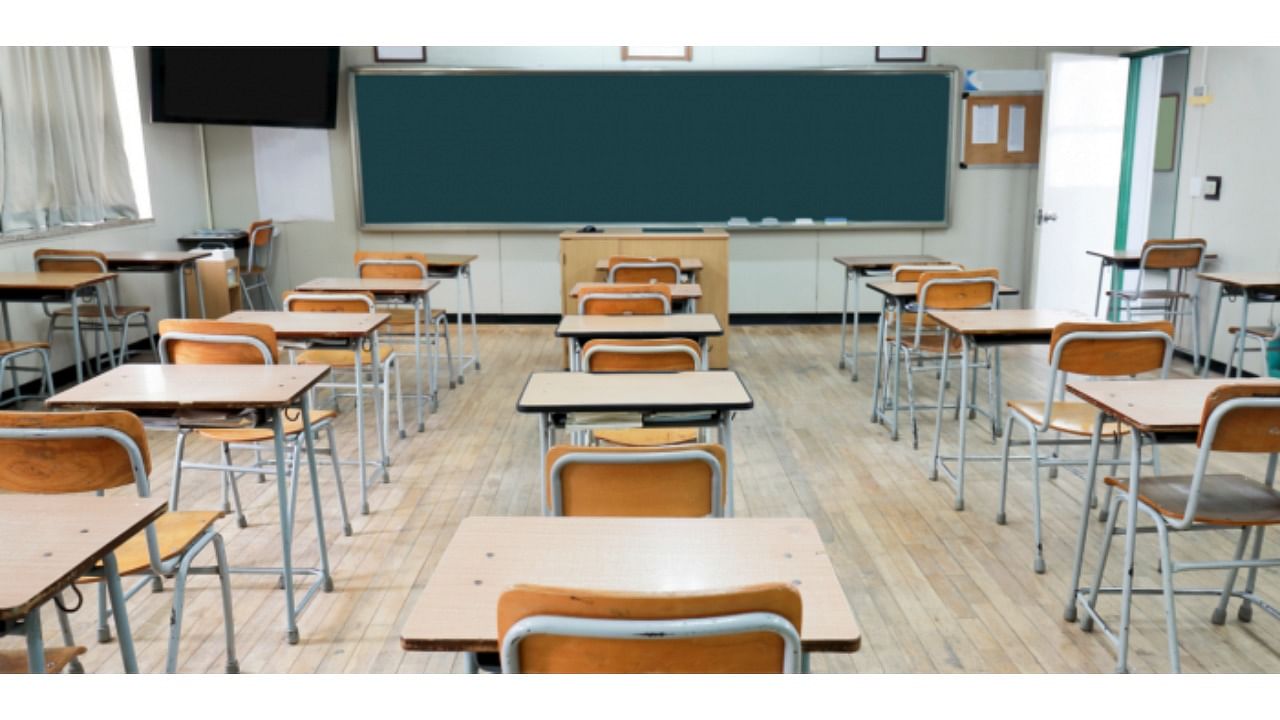
The National Education Policy (NEP 2020) promises a substantial increase in public investments in higher education. The Union Minister of Education (MoE), on the other hand, douses all hopes by stating that ‘people should let go of the idea that universities must only be funded by the government.’
He may have disappointed the higher education fraternity by letting the cat out of the bag but he essentially echoed a provision of the General Financial Rules (GFRs) which demands all autonomous institutions to enhance user charges and cost recoveries to attain self-sufficiency.
Still, it runs counter to the NEP 2020, which emphasises public education as an important instrument for enhancing access, equity and inclusion. The policy assures that the autonomy of public institutions will be backed by adequate public funding.
The policy laments that the public expenditure on education was nowhere close to the 6% of GDP, as envisaged by the 1968 policy, reiterated in the policy of 1986, and reaffirmed in the 1992 review of the policy. It pledges that the Centre and States would work together to increase public investment in the education sector to reach 6% of GDP at the earliest.
Public investment in education has been plummeting for some time now. The combined expenditure of the Centre and State on education has decreased from 3.1 percent of GDP in 2013-14 to 2.8 percent now. The budget estimates for 2021-22 peg the figure at 3.1 percent but in all likelihood, the actual would continue to remain at the present level, for actual expenditure on education is generally lower than the budgeted.
Expenditure on education as a percentage of the total expenditure of the Centre and States has tapered off from 10.8% in 2014-15 to 9.7% in 2021-22. The share of education in social services has nose-dived from 46.1% to 36.6% during the same period.
Besides the education departments, other ministries and departments of the Central and state governments also spend on education. This taken into account, the expenditure in absolute figures becomes somewhat optimistic. Such expenditure on education is slated to go up from 4.05% of GDP in 2010-11 to 4.39% in 2019-20 (Budget Estimate).
States fare better
Available data defies the general perception that states invest less in education. In reality, the expenditure on education by them has risen from 2.94% of GDP in 2010-11 to 3.27% in 2019-20 (BE). In contrast, the expenditure on education by the Centre declined from 1.11% of GDP in 2010-11 to 0.98% in 2018-19. The revised estimates (RE) for 2019-20 aspire to raise it again to 1.12%.
Funding higher education
Higher education has been the worst victim of declining public investment in education. Sadly, the new education policy fails to highlight this aspect. It doesn’t allude to the fact that the expenditure on university and higher education by the centre and the state has plunged from 0.86% of the GDP in 2010-11 to a measly 0.52% in 2019-20.
Worryingly, the centre’s expenditure on higher education has dropped from 0.33% of GDP to 0.16% during the corresponding period. So has been the case with the expenditure on higher education by the states which slid from 0.53% to 0.36% of GDP during the same period.
Importantly, the expenditure on higher education by states has been rising by a compound annual growth rate of 6.53% during 2010-11 to 2019-20. In contrast, the Centre’s expenditure on higher education has risen only 3%.
Over the past 10 years, the CAGR of per-student expenditure on higher education by the Centre has been a negative 0.41%. In comparison, states have been doing relatively better as their expenditure on higher education has recorded a CAGR of 3%.
Education being in the concurrent list of the Constitution is a joint and shared responsibility of the Union and states. Co-ordination and maintenance of standards in higher education, however, falls squarely under the domain of the Union government. Quite naturally, it is expected to become a role model for the states in terms of quality and funding. Sadly, it falls short of the expectations.
Contrary to the general argument that allocation for higher education is constrained by the availability of funds with the central government, the data proves otherwise.
Juxtaposing the expenditure on higher education against the revenue receipts as well as the total receipts of the Union government shows that a rise in the receipt is no guarantee for enhanced allocation for higher education. During 2011-12 to 2022-23, the revenue receipt of the Union government grew from Rs 7.51 lakh-crores to Rs 22.04 lakh-crores. The total receipts too increased from Rs 13.07 lakh-crores to 39.44 lakh-crores.
Much to the discomfiture of the academic fraternity, the union government’s expenditure on higher education, during the same period slipped from 2.60% of its revenue receipts to 1.85%. As a share of the total receipts, the expenditure on higher education declined from 1.49% to 1.04%.
Obviously, the problem is the absence of political will to accord due priority to education. Resource scarcity and competing priorities are only a façade. As the nation enthusiastically celebrates the anniversaries of the new education policy, it is high time that the Union and the states committed to allocating a pre-specified percentage of their revenue and budget to education. These could be targeted such as to achieve the cherished goal of spending a minimum of 6% on GDP on education.
(The writer is a former adviser for education in the Planning Commission of India and a Professor at the Faculty of Management Studies, Jamia Millia Islamia, New Delhi)